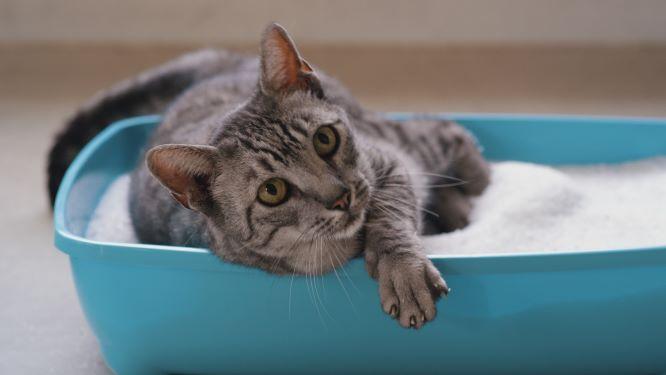August 30, 2018 |5 min read
Cat Claw Care 101

Anyone who has ever been around a scared, angry, or just overstimulated cat can attest to how dangerous and sharp cat claws are. Given that cats have sharp reflexes and often move too quickly for us to respond in time, cat scratches are an unfortunate risk that comes along with sharing a home with these loveable furballs.
Humans aren't the only potential casualties of Fluffy's razor paws, though. Upholstery, curtains, boxes, and more can all fall prey, which is why it's so important for pet parents to give their cats acceptable scratching surfaces and to keep their nails trimmed to limit not just possible damage to themselves and their home, but also to keep the cat from injuring herself by accident.
Why Do Cats Scratch?
Cats scratch for multiple reasons. According to the Humane Society, they scratch to husk away the dead outer layer of their claws, to mark their territory, to stretch their feet and bodies, and sometimes just to blow off steam.


This behavior is instinctual and normal, so you should provide your cat with a few different scratching options to keep him happy and spare your drapes. Commercial scratching posts and pads are available in a variety of forms and materials, but almost anything with a coarse, textured surface will work.
Cat Litter That Prioritizes Their
Health & Your Happiness.
for 20% Off + a FREE Catnip Toy
Do I Need to Trim My Cat's Claws?
Indoor cats are prone to overgrown nails, which can curl under and into their paw pads and cause infection, soreness, and difficulty walking or using the litter box. While some cats will wear down their nails naturally through playing and scratching, you will probably need to trim your cat's claws every few weeks to keep them at a reasonable length.
How Do I Trim My Cat's Claws?

This can seem like a daunting process, but as long as you don't rush and you make the experience as stress-free as possible, your cat should be okay with the process. The ASPCA and the Washington State University School of Veterinary Medicine both have very useful and detailed step-by-step guides.
The basic rules are as follows:
- Start slowly and make sure your cat is comfortable with you touching his paws long before you bring out the clippers. Spend time gently petting and rubbing his paws to help him get used to the sensation.
- Introduce the clippers without trying to trim anything yet. Squeeze the clippers a few times in the cat's line of sight to let him connect the noise with a visual.
- When it comes time to trim the claws, make sure your cat is completely calm, even groggy, and in a quiet room with no distractions. Let him get comfortable, gently massage the paws until a claw extends, and then snip the tip of a claw. It's better to take less than more, as going too far with the clippers can make you cut the nerve endings (known as the quick), causing pain and bleeding.
You probably won't be able to trim every nail in one sitting, and that's okay. Again, let your cat set the pace. He'll let you know when he's had enough. When he does, let him go and try again later.
What If I Cut the Quick?
Cat claws are generally clear or white, so the quick (the pink part near the paw) is easy to avoid. If you cut it, though, don't panic. Dip the claw into styptic powder or cornstarch to help stop the bleeding. If the cat won't let you, just be sure to keep an eye on him to make sure the bleeding stops; it should cease within approximately five minutes. If it doesn't, contact your vet for further advice.

Tired of your
home smelling like
you have a cat?
Use code PRETTYBLOG
Can't I Just Declaw My Cat?

While technically an option, this should be avoided at all costs. Both the ASPCA and the Human Society are strongly opposed to the practice of declawing cats except as a measure of last resort when all other efforts have failed. And with good reason--declawing is the equivalent of a human's fingers being amputated at the last knuckle, and it can lead to infection, lameness, and litter box avoidance, as well as leave your cat without a vital defense mechanism if he should find himself outside and needing to fend off a predator or climb a tree to get away from a threat.
Sources:








